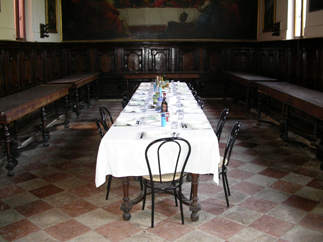
About us
See our History and why the name: 'the Milena principle' >>>
![]()
the Milena principle: a nomadic museum?
Left an original background and interest in the relationship between research and art, in promenadologie, land art and performance, we are concerned about the interdisciplinary interaction of (urban) landscape and the body in subjective and emotional cartographies. The fusion that characterizes this dynamic in our network is an elaboration of the concept 'Consilience', by O. Wilson defined as an epistemological process that science brings in unison with humanities.
Consilience: 'The Unity of Knowledge' [1998] by biologist E. O. Wilson. Wilson discusses methods that have been used to unite the sciences and might in the future unite them with the humanities. He prefers and uses the term consilience to describe the synthesis of knowledge from different specialized fields of human endeavor.
We add the impact of new technology and new media to a wide variety of disciplines (visual art, digital art, literature, architecture, psycho-geography, ecology, philosophy, anthropology, sonology, philosophy of science).
To stimulate and participate in European partnerships and networks is essential for us as a nomadic organization, in which human relationships are the central axis in a network of artistic and scientific affinities with implicit utopian objectives.
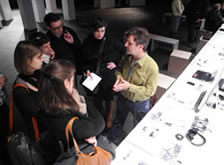
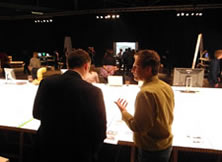
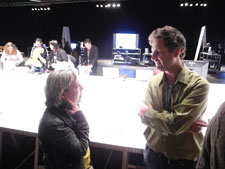
The nomadic and temporary translates into a regular small-scale participatory initiatives and exhibitions, often in an intimate setting and in alternative venues, in addition to museums and cultural institutions, still starting from creative processes and results of a temporary nature (sometimes limits to 24 hours, but with constant and interdisciplinary activities during this short and intense happenings).
The use of temporality as an artistic tool above embedded in the importance we give to be aware in general and in the specific (to Stef Van Bellingen) "to an associative detachment between: thinking, acting, environment and welfare. As worded question: how to manifest our thoughts via acts in our environment and to what extent they will benefit our well-being? "
the Milena principle is a ‘think tank’ in which people from several European countries come together. We work as an European organisation and we realized art events in countries all over Europe. Within the projects of the Milena principle various international artists, writers, scientists come together and cooperate, create with a multi- and interdisciplinary attitude and reflect about the border crossing aspects of culture, art, science, ecology and health. One of the important aspects of the Milena members is their individual research in various fields such as art, philosophy and science.

![]()
[ Fields ]
Every effort is made to create a 'field' in which the relation nature-culture is no longer considered as irreconcilable to this artistic project.
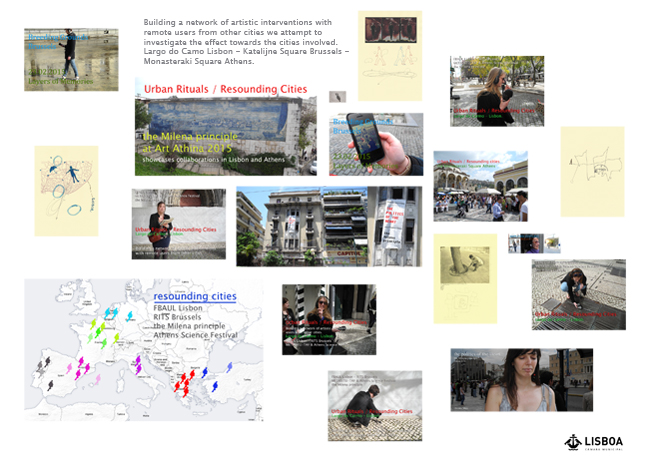
the Milena principle is a ‘think tank’ in which people from several European countries come together. We work as an European organisation and we realized art events in countries all over Europe. Within the projects of the Milena principle various international artists, writers, scientists come together and cooperate, create with a multi- and interdisciplinary attitude and reflect about the border crossing aspects of culture, art, science, ecology and health. One of the important aspects of the Milena members is their individual research in various fields such as art, philosophy and science.
Philosophical arts events were held in a private sphere as an essential finger exercises for the future. To open them for a wider interested public.
![]()
The ecology of the idea
the Milena principle is a multidisciplinary project where art connects with a cross-border aspect. Ecology encompasses a range of issues including in relation to environmental, sociological, social, economic aspects. Ecology is one of the conceptual foundations of the Milena principle. All projects are starting from an ecological approach. We are working with
environmentalists, arts centers that combine art and ecology in their functioning like the convent of Tibães in Portugal, Der Wachsblock, Ingrid Pee in Germany.
Ecology as a state of mind: indecision about [or ignoring] the remediation of contaminated sites is a metaphor for 'postponing the future'.
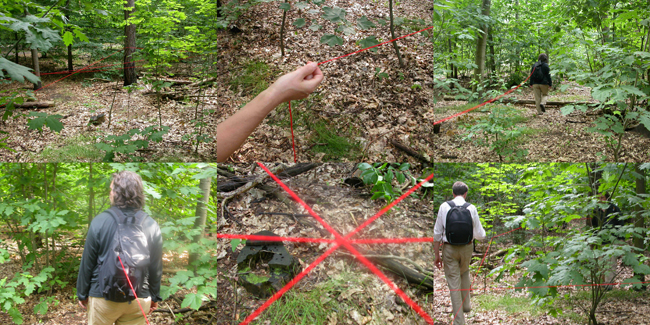
![]()
History and name
Origine and shaping a network of friendship
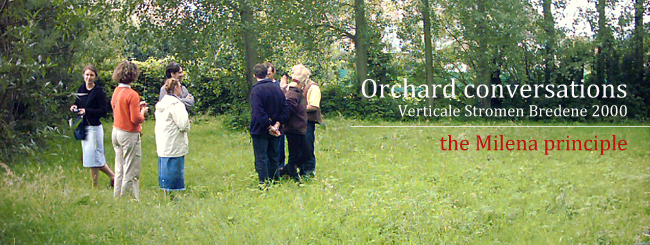
It is with some amazement and pride that we note that the Milena principle already exists for more than 15 years! The first meeting was during the art project 'Vertical Flows' ['Verticale Stromen' Bredene Belgium 2000]. The curator of this project was art historian Filip Van de Velde and the organization was in the hands of Geert Vermeire. The photo above is one of the only surviving images of a meeting in Bredene, an 'orchard conversation' in preparation for the project. [When this photo was taken, there was no question of an organization. It was a group of like-minded friends who decided to work together on a regular basis]. This picture is symbolic of the emergence of the Milena principle and the further evolution. 15 years later, the Milena principle has become a nomadic organization located in Belgium and at the same time structurally active in a number of European countries, both in partnerships at the institutional level, art institutions, museums, universities and art schools as with collectives and individual experts, academics and artists from different disciplines.

the Milena principle came officially into being during a first ‘table of meetings’ in the early summer of 2003 and manifested itself in the exhibition 'Omtrent Melancholie' [= About melancholy] of curator Filip Van de Velde, some months later. These were also non planned sought-after events, that we seized upon.
the Milena principle arose out of the convergence of experiences of a number of artists, experiences which grew, and arose from their own artistic path of life. It did not arise from a programme.
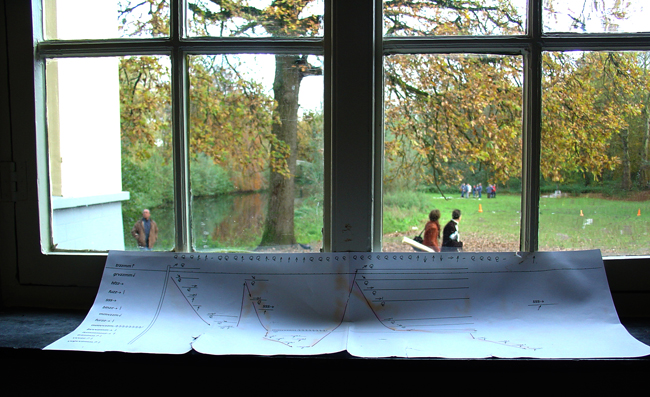
![]()
The name 'the Milena principle'?
The nomads of a new era - crossing borders
In the old Italian language 'Milena' means 'the beloved'. The name ‘Milena principle’ refers to the return of a young Bulgarian lawyer from Sofia who decided to follow her heart after a turbulent period in the Millennium. For her, this meant leaving behind a safe, settled life in her own country and a new life to be started all over again with the prospect of an uncertain future. As a nomad of a new era travelling between different cultures, she was unexpectedly present at the first lecture as a travelling companion. This inspired the group, to view her arrival as a symbol of thinking beyond boundaries, and to link her name to the group, the projects and the lectures. So the name 'the Milena principle' was born.
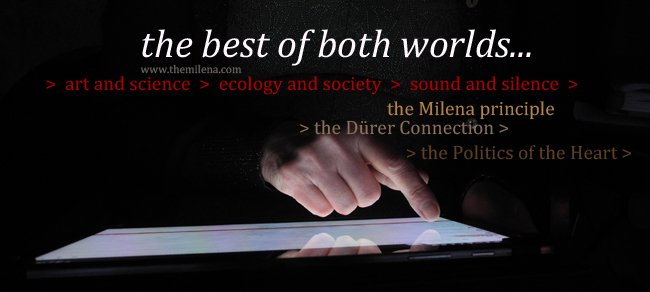
The lady wants to stay anonymous.
![]()
Letters to Milena by Franz Kafka [1883-1924].
"In this love you are like a knife, with which I explore myself." Franz Kafka, Letter to Milena Jesenská (14 September 1920).
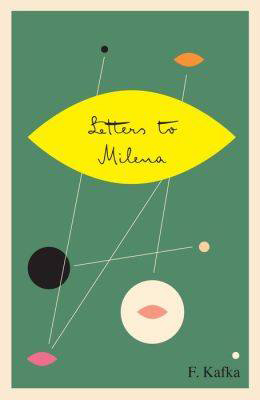
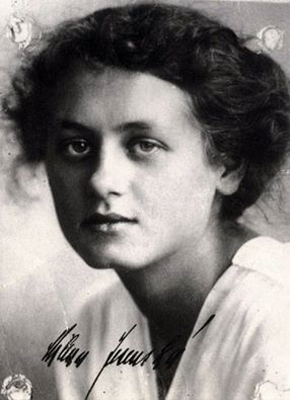
In 1919 Milena Jesenská, a Czech journalist, writer and translator, discovered a short story [The Stoker] by Prague writer Franz Kafka, and wrote him to ask for permission to translate it from German to Czech. The letter launched an intense and increasingly passionate correspondence. Jesenská and Kafka met twice: they spent four days in Vienna and later a day in Gmünd. Eventually Kafka broke off the relationship, partly because Jesenská was unable to leave her husband, and their almost daily communication ceased abruptly in November 1920. They meant so much to each other, however, that they did exchange a few more letters in 1922 and 1923 and Kafka turned over to Jesenská his diaries at the end of his life.
![]()
the Milena principle. Who are we?
Annemie Mestdagh (B) [production assistent, photographer, webmaster], Geert Vermeire (B) [curator, writer, performance artist and managing director of the Milena principle], Stefaan van Biesen (B) [visual artist, multi media, sound artist, writer], Dr. Simona Vermeire (Rom/Port) [writer, research, literay consult], Filip Van de Velde (B) [art historian, curator and working at S.M.A.K, museum of contemporary art Ghent Belgium], Walter Van Dam (B) [writer, education], Bregt Smeets (B) [dental research, criminologist], Peter De Schouwer (B) [writer, economical analysis], Dr. Shaomin Xue (B/China) [Chinese doctor, research, philosopher]...
[and others who want to stay anonymous...].
the Milena principle was shaped by the presence of Peter De Schouwer (B) (traveller and writer), Geert Vermeire (B) (poet, curator, performer and musicologist), Paula Ximenes (B/Brazil) (photographer), Dr. Simona Vermeire (Port/Rom) (literature critic, author, editor), Filip Van de Velde (B) (art historian, performer and curator), Julie Snauwaert (B) (teacher), Annemie Mestdagh (B) (production assistent, photographer, reflexologist), Stefaan van Biesen (B) (visual artist and writer, member of WIT: urban intervention team), Jan De Wachter (B) (visual artist), Ann Meeus (B) (nurse), Sylvie Duhamel (B) (visual artist), Herman Bervoets (B) (information scientist), Lutgard De Keersmaeker (B) (manager of a gallery), Vincent Ghadimi (B) (musician and composer), Imel De Boeck (B) (pharmacist), Niki Fröhling (Nl/G) visual artist), Walter Van Dam (B) (writer), Linda Ivens (B) (education), Bregt Smeets (B) (dentist and criminologist), Dr. Xue Mhin (China/B) (doctor and acupuncture), Ingrid Pee (G) (philosopher), Dr. Rhea Thönges Stringaris (G/Gr) (art historian and writer), José Da Costa Reis (Pt) (Biscainhos Museum Braga), Margot Dieleman (B) (photographer, WIT: urban team), Eric Windey (B) (visual artist, WIT: urban team), Lynn Louise Pauwels (B) (research the Milena principle - VUB university Brussels), George Samantas (Gr) [anthropology, sensory media] Akoo - o, Dana Papachristou (Gr) [music, musicology] Akoo - o.
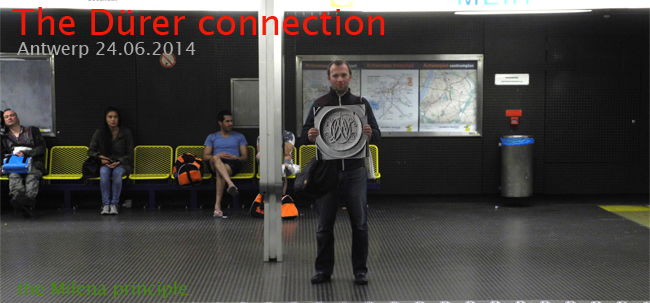
![]()
What is the Milena principle?
Describing what the Milena principle exactly stands for is not easy. the Milena principle is not 'something', it is time and again defined by the experiences, the actions, the artistic contributions and participations of those persons taking part.
the Milena principle arises out of experiencing actions, of communicating, interacting and dialogue via our images and performances. The 'definition' or 'explanation' can only come afterwards: we do not depart from concepts, but from our artistic deeds. A 'definition' is only a means to comment on the images or a signpost. the Milena arises through interaction and communication.

The seeds of the Milena principle have long been present, as a matter of fact it has always been there in their teamwork. the Milena principle was already present in the journey ‘Eine Spur von Erinnerung’ (= A track of memories) from Stefaan van Biesen, Jan De Wachter, Annemie Mestdagh and Ann Meeus to Weimar and Kassel (Germany) by Ingrid Pee, (co-worker from the Bureau der 7000 eiken (= Bureau of the 7000 oak trees) by Joseph Beuys), in the early years of 2000. It was already present in the cooperation between poet, performer Geert Vermeire and art historian Filip Van de Velde in 2000 when Filip Van de Velde and Geert Vermeire started poetry projects in the SMAK (museum of contemporary art Ghent Belgium) and in 2001 when Filip Van de Velde, Stefaan van Biesen and Geert Vermeire worked together in Bredene for the exposition 'Verticale Stromen' (=Vertical Streams), Belgium, a.o. with workshops. Also in Bredene, the public was already a part of the exhibition event via diverse interactive activities, 'on the road’ was already the essence of our activities at that point.
the Milena principle is not something 'new', it was already present in what the participants did. That is why the Milena principle is not perishable, we recognize ourselves in it because we are not only part of it, but because it is also a confirmation of what we already did in the past and of what we continue to do.

'jeder Mensch ein Künstler'
But that does not mean that the Milena principle does not depart from a vision or that the Milena principle turns round the arbitrariness of emotion. The force of the Milena principle is the inner coherence and inner logic, which is not based upon intellectualising, but on a way of thinking with the body. We do not keep distance, we touch others directly. We depart from a univocal feeling. That is why what we do, is recognizable for everybody, we bare something that is already present in everybody: the amazement, the emotion, the cheerfulness, the liveliness, the comfort and the delight. We point out the lustre of the transitory. We point to the unique and special, which is hidden in each one of us, to how unique everyone is, that humans are neither like numbers nor like cogwheels in a smooth turning world. This has got to be exactly what art is all about: the pleasure and the marvel of our vulnerable humanity.

Philosophical arts events were held in a private sphere as an essential finger exercises for the future. To open them for a wider interested public.
The lectures are usually held in private homes. The idea of a room as a meeting place enables the friendly sharing of experiences and ideas, elaboration of new travelling projects, finding others in a common, artistic and social manner. This visionary character of art is the underlying basis of the Milena principle. During these meetings small multidisciplinary exhibitions are also held. These artistic pop up events have a high 'laboratory value' and the performances, installations, drawings, poetry and discussions take place in an organic way. It is this continuous experimenting with different possibilities that leads to a specific place.
![]()
Hospitality for Strangers: an icon.
'Hospitality for strangers' Gustave van de Woestijne 1920 [ 66,5 x 74,5 cm] © Museum voor Schone Kunsten Gent België.
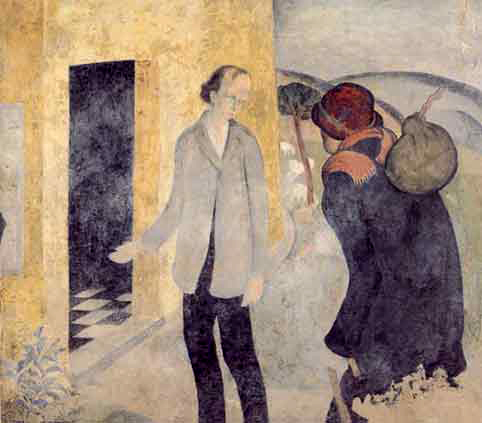

![]()
.jpg)
